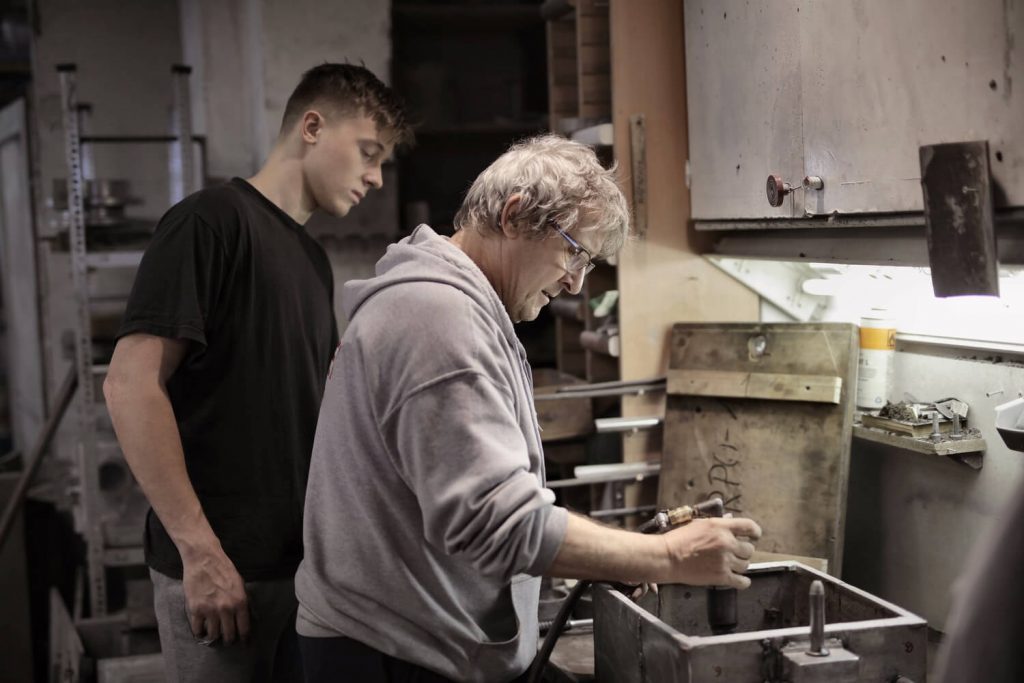Manufacturers are coping with a massive wave of retirements. With over a quarter of the workforce over the age of 55, many workers are leaving their jobs with a wealth of knowledge and experience. A recent survey found that 57% of Baby Boomers have shared less than half of the knowledge needed to perform their job responsibilities when they retire. More shocking, 21% have shared none of their knowledge — almost a quarter of a generation’s expert knowledge, which will likely be retiring in the coming years.

Motorship programs for passing on expert knowledge
Mentoring is one of the most effective ways of passing down tacit know-how from an expert to an aspiring expert. This practice dates back throughout human history, and is just as relevant today. Mentoring is about practice under the guidance of an expert. Unlike classroom learning, the apprentice or mentee is given practical tasks, under the supervision and guidance of his mentor.
Mentoring can be implemented both formally (as above) and informally. Informal mentor relationships could involve assigning a guide to a new employee, or simply encouraging him to seek out a mentor. For the most part however, organizations are beginning to look at formal relationships designed to train the newcomer as quickly and effectively as possible.
Knowledge transfer programs
When an important member of your team decides to leave, one of your most urgent priorities is knowledge transfer. You know the feeling: this team member possesses critical expert knowledge, and if that information leaves with them, the repercussions will be felt throughout the organization. For many, the departure of a critical employee triggers a scramble of meetings to capture as much knowledge as possible before they go. A knowledge transfer program gives you a strong foundation for growing and developing team members and streamlining personnel changes. And the good news is that it doesn’t have to be complicated: a solid, step-by-step strategy is all you need to gather knowledge and transfer it to those who need it.
Create long-lasting expert documentation
Workers with experts knowledge are usually busy. They’re spread thin between troubleshooting problems, performing a variety of tasks, and training employees. Instead of asking them to write down their vast amounts of knowledge and know-how, take time to observe experts during key procedures and record the process in a detailed fashion. One way to circumvent this problem is to record the work in action. Take detailed notes of a process and capture as much information as possible. Capture images and videos of the work, and then write down the important details later. You’ll find REWO to be an extremely useful tool to do this.
Sharing expert knowledge is key
The incoming, younger workforce is thoroughly skilled in digital user interfaces — earning them the title of “digital natives.” Companies can find success at the crossroads of retiring experts and these incoming workers. These “digital natives” expect all of their learning and training to take place through a screen. Manufacturers can benefit from this. It’s time to lean into scalable, digital solutions which capture the knowledge of retiring workers and efficiently train the next generation of manufacturers. This allows both generations to learn from each other. Tenured employees will benefit from the digital competency of the new workforce. New hires will gain first-hand experience and feel confident at their job from day one.
